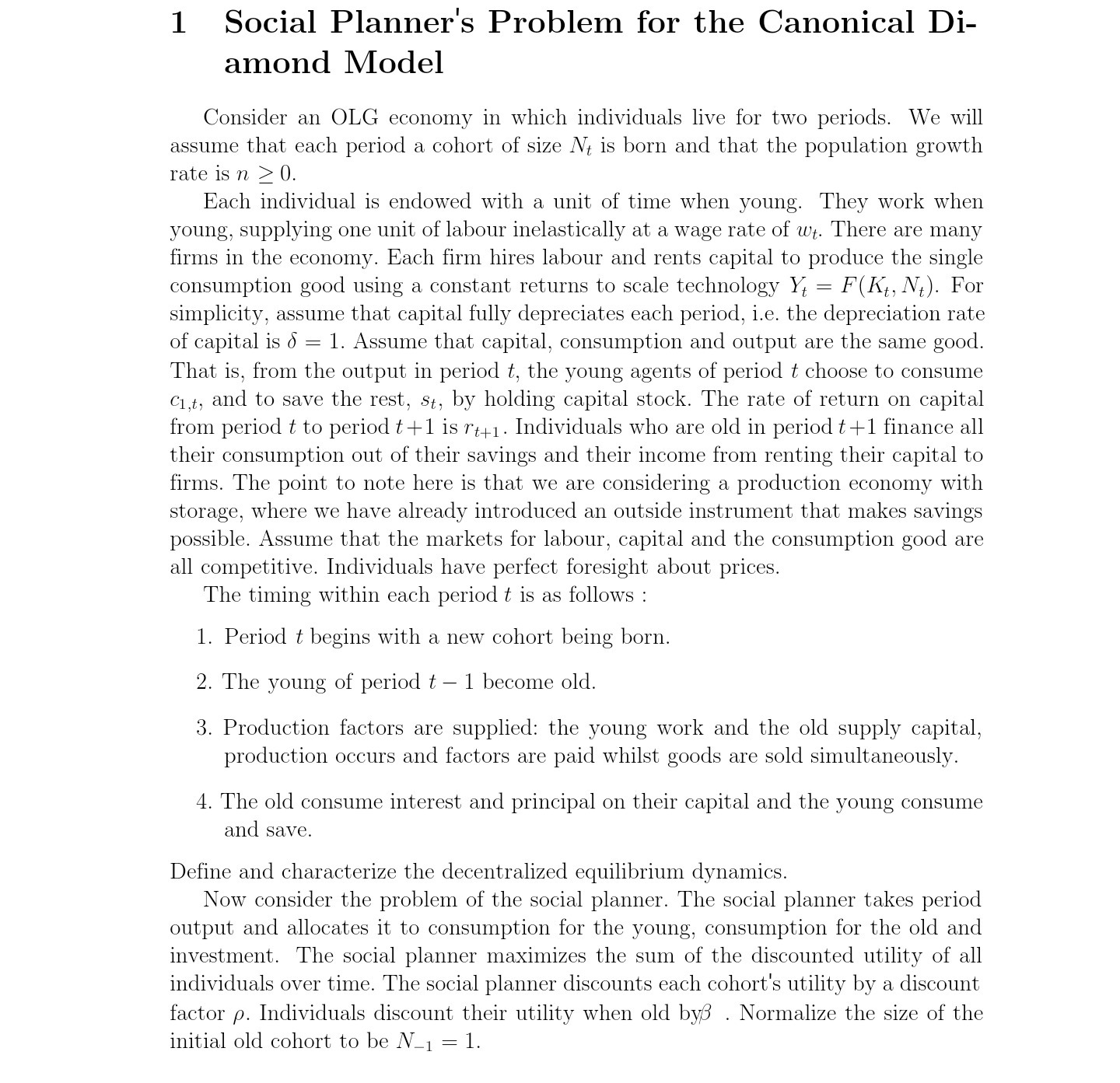
1 Social Planner's Problem for the Canonical Di- amond Model Consider an OLG economy in which individuals live for two periods. We will assume that each period a cohort of size N, is born and that the population growth rate is n 2 0. Each individual is endowed with a unit of time when young. They work when young, supplying one unit of labour inelastically at a wage rate of 71);. There are many firms in the economy. Each firm hires labour and rents capital to produce the single consumption good using a constant returns to scale technology Y, = FUQ, Nt). For simplicity, assume that capital fully depreciates each period, i.e. the depreciation rate of capital is 6 : 1. Assume that capital, consumption and output are the same good. That is, from the output in period t, the young agents of period t choose to consume 01;: and to save the rest, st, by holding capital stock. The rate of return on capital from period t to period t+1 is Tt+1- Individuals who are old in period t+1 finance all their consumption out of their savings and their income from renting their capital to firms. The point to note here is that we are considering a production economy with storage, where we have already introduced an outside instrument that makes savings possible. Assume that the markets for labour, capital and the consumption good are all competitive. Individuals have perfect foresight about prices. The timing within each period t is as follows : 1. Period 75 begins with a new cohort being born. 2. The young of period 15* 1 become old. 3. Production factors are supplied: the young work and the old supply capital, production occurs and factors are paid whilst goods are sold simultaneously. 4. The old consume interest and principal on their capital and the young consume and save. Define and characterize the decentralized equilibrium dynamics. Now consider the problem of the social planner. The social planner takes period output and allocates it to consumption for the young, consumption for the old and investment. The social planner maximizes the sum of the discounted utility of all individuals over time. The social planner discounts each cohort's utility by a discount factor ,0. Individuals discount their utility when old by' . Normalize the size of the initial old cohort to be N_1 : l








